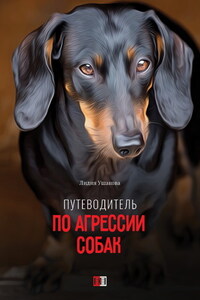THE COLLINS NEW NATURALIST LIBRARY is a publishing phenomenon. It started during World War II (like National Parks and nature conservation planning) and rolled on unstoppably, decade after decade, far beyond the plans or expectations.
If you have picked this book up, our guess is that you have at least heard of the series and probably know something about it. Perhaps you came across it at school or university, and have some favourite titles on your shelves. Possibly you are a full-fledged New Naturalist collector. Maybe you even own a full set, now taking up an entire bookcase from floor to ceiling, along with the 22 New Naturalist monographs and the ill-fated single-volume New Naturalist magazine (we know of one or two hardcore collectors who are seeking to own every edition). Or perhaps you are just intrigued about why there should be a whole book about so humble a thing as a book jacket. Either way, do read on.
It would be bad manners, as well as unwarranted, to assume that you know all about the series already and so launch straight into the story of the jackets. The full story of the New Naturalist library, of those that wrote them, and the team that set it all in motion, and kept those titles rolling, can be found in Peter Marren’s The New Naturalists (always apt to be out of print but fairly easily found secondhand, especially in the revised edition). Here we can at least offer a summary of what the books are about, and why they are held in high regard. If this is familiar ground already, skip this bit.
At the time of writing there are 110 titles in the mainstream New Naturalist library. There are also 22 titles in the long out-of-print monograph series devoted to a particular species or more specialised subject. Today’s marketing economies decree that books are never in print for long unless they turn out to be bestsellers; the life in print for a New Naturalist nowadays is only a few years, and often less (it depends on how long the hardback run takes to sell out). But many older New Naturalist titles were kept in print from the date of publication to the 1970s or ‘80s, and some bookshops displayed them all together.
These books are unusual. They are halfway between being popular and academic, and are at once interested in the minutiae of life and the big picture. Taken together they offer a survey of the wildlife and scenery of a single country over half a century that is probably unique. The library was the brainchild of William Collins (1900–1976), managing director of the family publishing business, who conceived an ambition to publish a series on natural history that would establish his company as the leading natural history publisher. The series would take full advantage of the latest developments in colour photography and in the natural sciences. On the publishing side he had established a successful partnership with a printing company, Adprint, with whom he launched the wartime hit series, Britain in Pictures. The partnership was to continue into the early years of the New Naturalists, in which Adprint (until they dropped out in 1950) was to commission illustrations, maps and diagrams.
Collins decided he needed a team of distinguished naturalists to draw up a list of titles, find the right authors for them, and to ensure the highest scientific and literary standards. This became the New Naturalist Board (also called the New Naturalist Committee). Collins persuaded Julian Huxley, one of Britain’s leading zoologists, to head the team, along with James Fisher, a young ornithologist whose book, Watching Birds, had been a wartime bestseller. The pair was joined by the bird photographer Eric Hosking, the botanist John Gilmour, and the geographer, Dudley Stamp, with either Collins himself or, increasingly, a deputy, officiating. The Board had its first meeting in early 1943, and thereafter met more or less monthly in a succession of temporary premises in war-torn London. Each of the editors was responsible for the titles within their professional knowledge, and they took a small royalty from the books for their services. They were loyal to the series and its aims, and, one suspects, shared a sense of mission born of the war and the hopes of the new Britain that would follow it. The original Board oversaw the developing series for 23 years without change until the death of Dudley Stamp in 1966. The last of them, Eric Hosking, served the series for nearly half a century.








